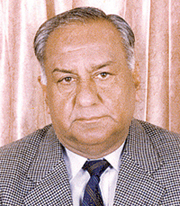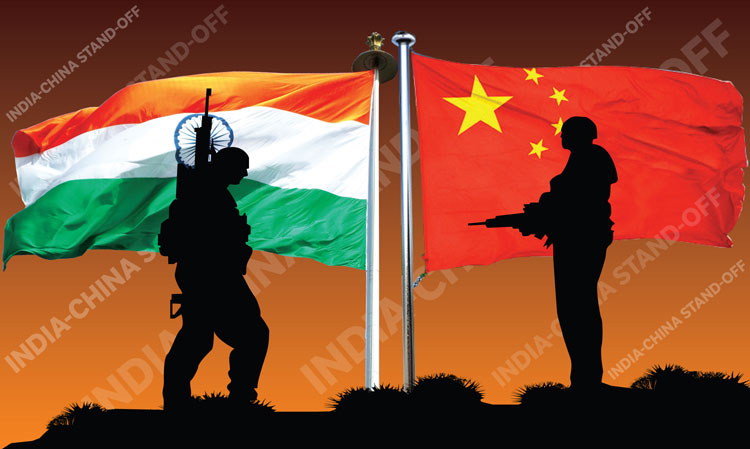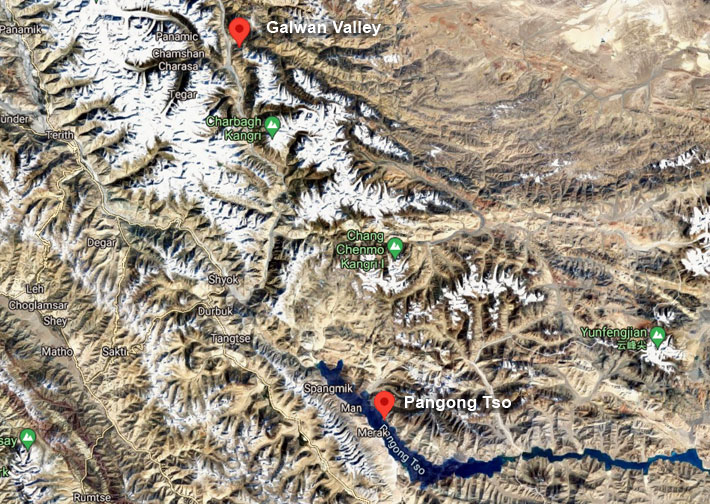INDIAN ARMED FORCES CHIEFS ON OUR RELENTLESS AND FOCUSED PUBLISHING EFFORTS

The insightful articles, inspiring narrations and analytical perspectives presented by the Editorial Team, establish an alluring connect with the reader. My compliments and best wishes to SP Guide Publications.

"Over the past 60 years, the growth of SP Guide Publications has mirrored the rising stature of Indian Navy. Its well-researched and informative magazines on Defence and Aerospace sector have served to shape an educated opinion of our military personnel, policy makers and the public alike. I wish SP's Publication team continued success, fair winds and following seas in all future endeavour!"

Since, its inception in 1964, SP Guide Publications has consistently demonstrated commitment to high-quality journalism in the aerospace and defence sectors, earning a well-deserved reputation as Asia's largest media house in this domain. I wish SP Guide Publications continued success in its pursuit of excellence.
- Operation Sindoor: Resolute yet Restrained
- India’s Operation Sindoor Sends a Clear Message to Terror and the World – ‘ZERO TOLERANCE’
- Japan and India set forth a defence cooperation consultancy framework, talks on tank and jet engines
- Terrorist Attack in Pahalgam in Kashmir: Unfolding a long surgical war against PAK
- Lt General Pratik Sharma takes over Command of Indian Army's Northern Command
Update on China’s intrusion in Ladakh
Chinese side made several attempts to cross the Line of Actual Control (LAC) in other parts of the Western Sector which included Kongka La, Gogra and North Bank of Pangong Lake.
 |
The Author is former Director General, Army Air Defence and was a member of Integrated Guided Missile Development Programme. |

Recap
India and China are yet to resolve their boundary question as China does not accept the traditional alignment of the boundary between India and China. The alignment of this boundary is based on long established geographical principles, treaties and agreements, as well as usage for centuries. Most alarming is that China continues to be in illegal occupation of approximately 38,000 sq. kms in Ladakh. Also 5180 sq. Km of Indian territory in Pakistan Occupied Kashmir was given by Pakistan to China in an agreement in 1963. China also claims approximately 90,000 sq. kms. of Indian territory in the Eastern Sector of the India-China boundary in Arunachal Pradesh thus the sensitiveness to Indian leaders visiting Arunachal or issuing Chinese visa to local residents holding Indian Passport. During April 2020, a build-up of Chinese military, on the Chinese side of the border areas next to Eastern Ladakh, was noticed. In early May, Chinese troops tried to hinder routine patrolling pattern of Indian troops in the Galwan Valley area, resulting in a face-off. While the problem was being addressed by local commanders, Chinese side made several attempts to cross the Line of Actual Control (LAC) in other parts of the Western Sector which included Kongka La, Gogra and North Bank of Pangong Lake. The Senior Commanders of the two sides in a meeting on June 6, 2020 agreed on a process of disengagement that involved reciprocal actions but this agreement was violated resulting in a violent face off on June 15 at Galwan and loss of 20 brave soldiers including the CO Col. Santosh Babu. Some Chinese casualties were also reported but China kept it under the wraps.
Pangong Tso Area
The LAC is land based but also through water in Pangong Tso (lake) which spans Eastern Ladakh and West Tibet. Pangong Tso is situated at an elevation of 4,225 m, is 134 km long and 5km wide at its broadest point. Ngari Prefecture is in West Tibet and well known to Indians for Mount Kailash which is 6,714 m (also called Sumeru) and Lake Manasarovar. The 45 km-long western portion is in Indian control.The slopes of the mountains jut forward into the lake at eight different points, which are officially referred to as “fingers”. India claims that its territory goes until the easternmost finger, that is number 8, whereas Chinese soldiers are now believed to have made incursions till Finger 4.
There have been ten round of talks at local commander’s level and both sides have agreed to revert to original positions.
Ambassador Stobdan who is from Ladakh and is India’s former ambassador to Kyrgyzstan has said that, “besides having a huge strategic importance, the lake has been a source of salt.” In 1947 India inherited a larger area of the lake but the Chinese made a claim Line and informed India in November 1959. Before 1962 China had already taken over the Khurnak fort area which is in ruins. Sirijap is a small plain on northern bank of the Pangong Tso in the southern part of the Aksai Chin region which is controlled by China but claimed by India. Here the famous battle which Major Dhan Singh Thapa of 1st Battalion, 8 Gorkha Rifles,fought in 1962. He was awarded the Param Vir Chakra. Permanent posts exist on both sides at the north bank of Pangong Tso for long and are well well-established. On the Indian side, it is Dhan Singh Thapa Post near Finger 3 and on the Chinese side, east of Finger 8. The current agreement provides for cessation of forward deployment by both sides and continued deployment at these permanent posts.
There have been ten round of talks at local commander’s level and both sides have agreed to revert to original positions.

Galwan Valley
The Galwan valley was the location of a violent face-off between Indian and Chinese troops on the night of June 15 resulting in casualties on both sides. This area has been dormant since 1962. The valley has strategic significance because it is close to the vital road link to the world’s highest landing ground located at Daulat Beg Oldie (DBO). Galwan river also flows through the area which was named after Ghulam Rasool Galwan, a Ladakhi explorer from Leh. This area is close proximity to the LAC and serves as an important aerial supply line. DBO area is known in the Army as Sub-Sector North (SSN). India is engaged in building up border infrastructure in this area, including the all weather 255 km Darbuk-Shyok- DBO (DSDBO) road. The alignment of the road is almost parallel to the LAC and at times very close to it. It is planned to extend the road to the base of the Karakoram pass. The vital DSDBO road has been completed, passes along the banks of the Shyok river near the confluence of the Galwan and Shyok. Galwan valley is in the way and very important for India for enabling rapid military build up and logistic support thus the problem as it control access to the Aksai Chin plateau through which part of the Xinjiang-Tibet highway passes. Thus India’s domination of Galwan valley enables India to keep the road to DBO and Karakoram open. In serious conflict it can disrupt the Xinjiang-Tibet highway and the China-Pakistan Economic Corridor. An alternate route to DBO is also being developed which is away from the LAC. On June 16, the PLA’s western theatre command statement had claimed sovereignty over the entire Galwan Valley, part of which lies in India. These claims and the massive ground intrusions in Eastern Ladakh which began in May represent the most concerted attempts by China to alter the LAC in recent years. China’s foreign ministry spokesperson Lizhian Zhao said on June 20 that the "the Galwan Valley lies on the Chinese side of the LAC in the western section of the China-India border.”
Chinese maps have always clearly shown the western end of the Galwan as being on India’s side of the LAC.
Patrol Point (PP)-14, marks the eastern most end of the LAC and is located around 3 km up the Galwan river. Chinese maps have always clearly shown the western end of the Galwan as being on India’s side of the LAC. PP-14 was the location of the deadly hand to hand violent conflict between India and China. This is the point up to where Indian troops patrolled routinely and returned to base.
The Darjeeling-born and Harvard educated Lobsang Sangay, President of the Central Tibetan Authority (CTA) said, in an interview recently, that "expansionism is part of the Chinese DNA and it is rooted in Beijing's deeply embedded Middle Kingdom mentality. "The term Zhongguo (the commonly known name of China) means Middle Kingdom and all in the periphery are barbarians.” He also said that “China has a five-finger policy since the 1950’s. Tibet is the palm thus it was occupied then (they thought) let us capture Ladakh... Let's (also) capture Nepal, Bhutan, Sikkim and Arunachal thus Doklam and now Ladakh is no surprise to him.”
Eleventh Round of Talks
The eleventh round of talks took place on April 09, 2021 to take forward the disengagement process in the remaining friction points such as Hot Springs, Gogra and Depsang in eastern Ladakh but has brought no results so far. China has served a double whammy to India of COVID-19 and stand-off in Ladakh.





